-
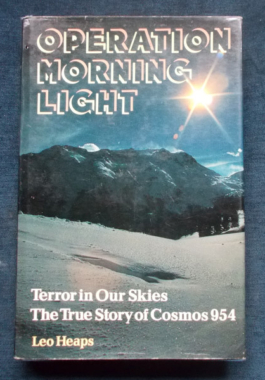 December, 1977: an urgent messaged was flashed from NORAD that a Soviet satellite had begun to malfunction by flipping out of its orbit - and was going to crash into the earth's surface. What followed was a real-life science fiction nightmare as scientists and politicians from America, Canada and the Soviet Union became embroiled in a terrifying tangle of intrigue and guessing games. Now the full story of this nightmare is told.
December, 1977: an urgent messaged was flashed from NORAD that a Soviet satellite had begun to malfunction by flipping out of its orbit - and was going to crash into the earth's surface. What followed was a real-life science fiction nightmare as scientists and politicians from America, Canada and the Soviet Union became embroiled in a terrifying tangle of intrigue and guessing games. Now the full story of this nightmare is told. -
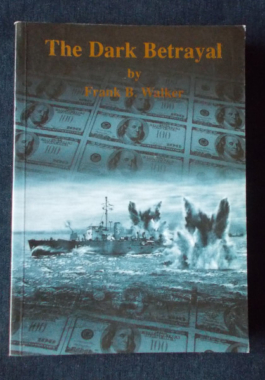
Ken Bartlett, an Australian sailor in a corvette in the Atlantic, took on a cloak-and-dagger mission into Nazi Germany. It was the start of a long and dangerous trail that led him to suspect that Allied firms traded with Germany and Japan during World War II. After arduous service in corvettes in both the Atlantic and the Pacific, he returned to his job as a journalist and followed the scent of the treason trade. This proved even more hazardous, with the FBI, CIA and thugs hired by the double-dealers out to get him. He achieved a victory - yet it was bitter.
-
 Most dramas end in anti-climax, but not in Nazi Germany. Everything about its demise was tragic crescendo. This is a dramatic countdown of the final months of World War II in Europe, bringing to life the waning power and the ultimate submission of the Third Reich. To reconstruct the tumultuous hundred days between Yalta and the fall of Berlin, John Toland traveled more than 100,000 miles in twenty-one countries and interviewed more than six hundred people - from Hitler’s personal chauffeur to Generals von Manteuffel, Wenck, and Heinrici; from underground leaders to diplomats; from top Allied field commanders to brave young GIs. When it was first published, The Last 100 Days made history, revealing after-action reports, staff journals, and top-secret messages and personal documents previously unavailable to historians. Illustrated with black and white archival photographs.
Most dramas end in anti-climax, but not in Nazi Germany. Everything about its demise was tragic crescendo. This is a dramatic countdown of the final months of World War II in Europe, bringing to life the waning power and the ultimate submission of the Third Reich. To reconstruct the tumultuous hundred days between Yalta and the fall of Berlin, John Toland traveled more than 100,000 miles in twenty-one countries and interviewed more than six hundred people - from Hitler’s personal chauffeur to Generals von Manteuffel, Wenck, and Heinrici; from underground leaders to diplomats; from top Allied field commanders to brave young GIs. When it was first published, The Last 100 Days made history, revealing after-action reports, staff journals, and top-secret messages and personal documents previously unavailable to historians. Illustrated with black and white archival photographs. -

Vietnam: Alan Watt
$15.00This Australian analysis was the fourth in a series of background books sponsored by the Australian Institute of International Affairs. This book dispassionately consider the much-discussed factual and legal consequences of the 1954 international agreements with an appraisal of the circumstances of Australian and American intervention as well as the arguments for and against involvement. -
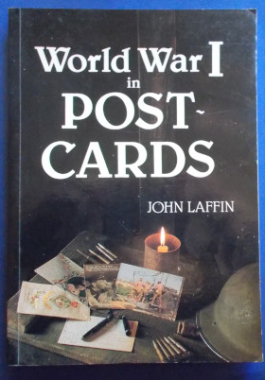 The extraordinary phenomenon of the war postcard - reflections of the full range of responses to the most murderous and ghastly of all wars. The chapters herein include: story postcards, military subjects, heroism and agony, religious themes, humour, animal and field postcards - even those embroidered with silk and very beautiful still today. Even propaganda is represented. Almost three hundred post cards are reproduced - individual historic documents of a bygone age. Photos in colour and black and white.
The extraordinary phenomenon of the war postcard - reflections of the full range of responses to the most murderous and ghastly of all wars. The chapters herein include: story postcards, military subjects, heroism and agony, religious themes, humour, animal and field postcards - even those embroidered with silk and very beautiful still today. Even propaganda is represented. Almost three hundred post cards are reproduced - individual historic documents of a bygone age. Photos in colour and black and white. -
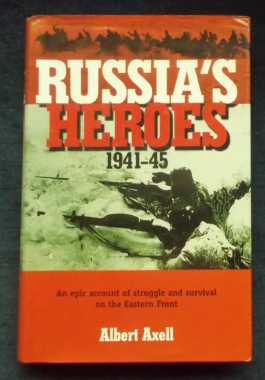 For four years in World War II, out of an unquestioned love for their mother country, the Russian people heroically defended their soil with their blood. Here is the full story of the valor of the sons and daughters, soldiers and villagers, Cossacks and snipers who battled in Moscow and Stalingrad, in the Caucasus and the Arctic, at the Brest fortress and Kursk Bulge. From the account of the aging Russian general who suffered drenchings in ice-cold water rather than collaborate with his Nazi captors to that of the nineteen-year-old private who flung himself on the gun port of a German pillbox so that his comrades could advance, these pages not only chronicle extraordinary selfless acts of heroism but also rectify an astonishing oversight in innumerable histories of World War II. With 16 pages of black-and-white photographs.
For four years in World War II, out of an unquestioned love for their mother country, the Russian people heroically defended their soil with their blood. Here is the full story of the valor of the sons and daughters, soldiers and villagers, Cossacks and snipers who battled in Moscow and Stalingrad, in the Caucasus and the Arctic, at the Brest fortress and Kursk Bulge. From the account of the aging Russian general who suffered drenchings in ice-cold water rather than collaborate with his Nazi captors to that of the nineteen-year-old private who flung himself on the gun port of a German pillbox so that his comrades could advance, these pages not only chronicle extraordinary selfless acts of heroism but also rectify an astonishing oversight in innumerable histories of World War II. With 16 pages of black-and-white photographs. -

For the first time since the early sixties there is widespread and growing concern about the possibility of a Third World War, given the massive stockpile of nuclear armaments and the growing tensions between superpowers. The author, the grandson of Winston Churchill, shows how this situation has arisen and provides the facts and figures to ensure a true understanding of the issues at stake. What is the balance of armed power in the world today? What are the chances of either side winning a nuclear war? How should the Western Allies respond to the growing global challenge from Russia? These and more questions are answered - the answers echo the warnings that were made about the threat from Nazi Germany. Those warnings went unheeded.
-
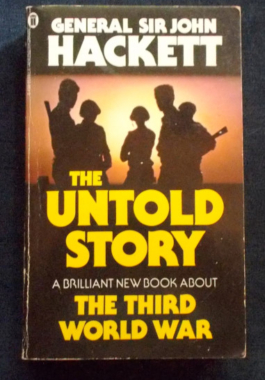 Hackett's first book, The Third World War: August 1985 sold 3,000,000 copies world wide and received great critical acclaim. This new book tells the rest of the story, using much new material, including declassified NATO reports and many hitherto unexplored episodes. It gives the inside story of how the war was planned in Moscow and experienced on the battlefield by the Warsaw Pact forces. Hackett re-examines his hypothetical scenario for World War III, incorporating the technological advances made in the four years since the publication of his first book.
Hackett's first book, The Third World War: August 1985 sold 3,000,000 copies world wide and received great critical acclaim. This new book tells the rest of the story, using much new material, including declassified NATO reports and many hitherto unexplored episodes. It gives the inside story of how the war was planned in Moscow and experienced on the battlefield by the Warsaw Pact forces. Hackett re-examines his hypothetical scenario for World War III, incorporating the technological advances made in the four years since the publication of his first book. -
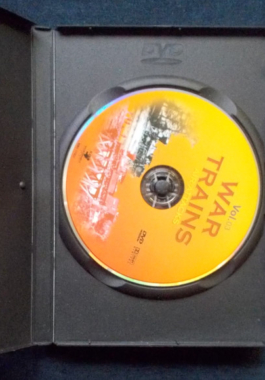
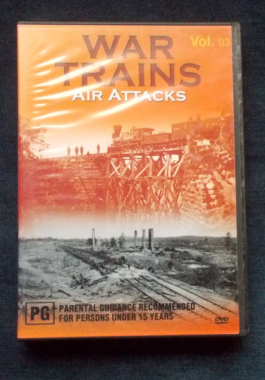 Volume 3 of the award winning series that covers the dynamic history of the railroads during warfare from the American Civil War to World Wars I and II, Korea and Vietnam. Whether under full attack or evacuating the wounded, the trains kept running.
Volume 3 of the award winning series that covers the dynamic history of the railroads during warfare from the American Civil War to World Wars I and II, Korea and Vietnam. Whether under full attack or evacuating the wounded, the trains kept running. -
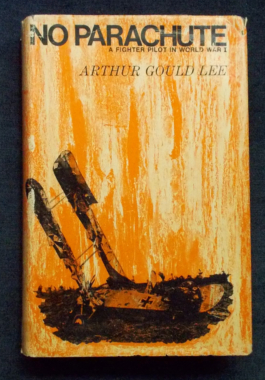 Arthur Gould Lee, who retired as an RAF air vice marshal, had the privilege of recording his feelings and actions during World War I in his letters home and what's more, his letters survived. A courageous 22-year-old, devoted to duty and well aware of the hazards he faced on the Western Front, Lee was more mature than most of his colleagues, in part by virtue of being married and in part because he had had the good fortune to have crashed during training, allowing him to log more hours of flight training than the average replacement pilot. He didn’t like the fact that the Germans had superior aircraft, and noted the qualitative differences in opposing Albatross D.Is, D.IIs and D.IIIs, the latter dubbed the “V-strutter” and carrying two machine guns to the single one carried by the Sopwith Pup. He writes about flying through a shell-laden sky, vulnerable to bullets from above and below. He never forgot the RFC's needless sacrifices and examines the failure of the Army High Command to provide efficient planes until mid-1917 and parachutes throughout the entire war. With black and white photos.
Arthur Gould Lee, who retired as an RAF air vice marshal, had the privilege of recording his feelings and actions during World War I in his letters home and what's more, his letters survived. A courageous 22-year-old, devoted to duty and well aware of the hazards he faced on the Western Front, Lee was more mature than most of his colleagues, in part by virtue of being married and in part because he had had the good fortune to have crashed during training, allowing him to log more hours of flight training than the average replacement pilot. He didn’t like the fact that the Germans had superior aircraft, and noted the qualitative differences in opposing Albatross D.Is, D.IIs and D.IIIs, the latter dubbed the “V-strutter” and carrying two machine guns to the single one carried by the Sopwith Pup. He writes about flying through a shell-laden sky, vulnerable to bullets from above and below. He never forgot the RFC's needless sacrifices and examines the failure of the Army High Command to provide efficient planes until mid-1917 and parachutes throughout the entire war. With black and white photos. -
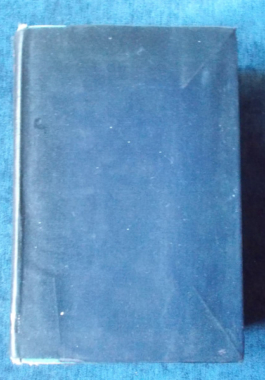
 Subtitle: A True Story Of Adventure From The Arctic To The Argonne. Described as the biography of a common soldier with thirty three years of service in the American Army, this 'uncommon' soldier distinguished himself in the Argonne in World War I and several other conflicts. Samuel Woodfill was regarded as being a true American frontiersman who seems to have had many and varied adventures, given such chapter headings as: I Was Born with a Gun in My Hands; A Surprise Attack and Escape Over A Precipice; Out of Company C Only Four Men Survived; The Tragedy of A Medicine Man; The Strange End of Sam Gowler and many others just as intriguing. Illustrated with black and white photographs.
Subtitle: A True Story Of Adventure From The Arctic To The Argonne. Described as the biography of a common soldier with thirty three years of service in the American Army, this 'uncommon' soldier distinguished himself in the Argonne in World War I and several other conflicts. Samuel Woodfill was regarded as being a true American frontiersman who seems to have had many and varied adventures, given such chapter headings as: I Was Born with a Gun in My Hands; A Surprise Attack and Escape Over A Precipice; Out of Company C Only Four Men Survived; The Tragedy of A Medicine Man; The Strange End of Sam Gowler and many others just as intriguing. Illustrated with black and white photographs. -

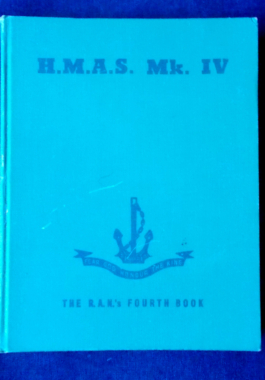 Published in 1945, this volume is literally by the men serving in the last days of World War II. Together, these articles, sketches, cartoons, poems and photographs are their story - not the story of the war, but a record of what they saw, felt and experienced. There's a humorous treatise on the Cockroach; an article on the first W.R.A.N.s to receive their sea training; and from an article simply entitled Tahiti by 'A.S.' : After dancing for a while I suggested a walk along the beach and the girls being agreeable were were soon settled down on the sands under the palms. Here is what I saw and felt. The moon shining through the palm fronds on the sand, while farther out the blue Pacific was breaking over the reefs, the moonlight making this appear like a lot of silvery cascades...my young lady's hair was lovely, and long enough to reach down and encircLe our waists, binding us together...I had read of scene such as these, but doubted them...Now I knew and felt...happy and contented and prepared to fall in love." One hopes that 'A.S. made his way home to Australia.
Published in 1945, this volume is literally by the men serving in the last days of World War II. Together, these articles, sketches, cartoons, poems and photographs are their story - not the story of the war, but a record of what they saw, felt and experienced. There's a humorous treatise on the Cockroach; an article on the first W.R.A.N.s to receive their sea training; and from an article simply entitled Tahiti by 'A.S.' : After dancing for a while I suggested a walk along the beach and the girls being agreeable were were soon settled down on the sands under the palms. Here is what I saw and felt. The moon shining through the palm fronds on the sand, while farther out the blue Pacific was breaking over the reefs, the moonlight making this appear like a lot of silvery cascades...my young lady's hair was lovely, and long enough to reach down and encircLe our waists, binding us together...I had read of scene such as these, but doubted them...Now I knew and felt...happy and contented and prepared to fall in love." One hopes that 'A.S. made his way home to Australia. -
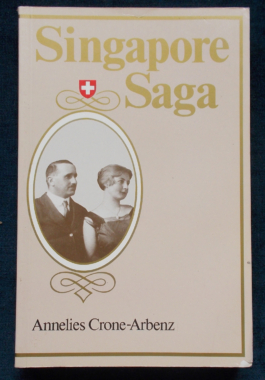 Part One of this autobiography relates the dramatic escape to Australia of three young Swiss sisters during the Japanese invasion of Singapore, then traces their gradual and complete adaption to the Australian way of life by the youngest sister, Annelies. Part Two is the story of their father, the Swiss Consul and their mother Gritli, who remained in Singapore at their posts in dedication to their community. This second part is translated from the recently discovered original diaries of their father, Rudolph Arbenz.
Part One of this autobiography relates the dramatic escape to Australia of three young Swiss sisters during the Japanese invasion of Singapore, then traces their gradual and complete adaption to the Australian way of life by the youngest sister, Annelies. Part Two is the story of their father, the Swiss Consul and their mother Gritli, who remained in Singapore at their posts in dedication to their community. This second part is translated from the recently discovered original diaries of their father, Rudolph Arbenz. -
 In the split second that it took Associated Press photographer Joe Rosenthal to snap the shutter of his Speed Graphic, a powerful and enduring American symbol was born. Iwo Jima: Monuments, Memories and the American Hero tells the story of that icon as it appeared over the next 40 years in bond drive posters, stamps, Hollywood movies, political cartoons, and sculpture, most notably the colossal Marine Corps War Memorial outside Washington, D.C. It is also a brilliant and moving study of the soldiers who fought one of the bloodiest battles in modern warfare and the impact that Iwo Jima had on the rest of their lives. The battle of Iwo Jima raged for many days and ultimately claimed the lives of almost 7000 American serviceman, yet that famous photo - a grainy outline of massed men and their flag - already symbolised victory.
In the split second that it took Associated Press photographer Joe Rosenthal to snap the shutter of his Speed Graphic, a powerful and enduring American symbol was born. Iwo Jima: Monuments, Memories and the American Hero tells the story of that icon as it appeared over the next 40 years in bond drive posters, stamps, Hollywood movies, political cartoons, and sculpture, most notably the colossal Marine Corps War Memorial outside Washington, D.C. It is also a brilliant and moving study of the soldiers who fought one of the bloodiest battles in modern warfare and the impact that Iwo Jima had on the rest of their lives. The battle of Iwo Jima raged for many days and ultimately claimed the lives of almost 7000 American serviceman, yet that famous photo - a grainy outline of massed men and their flag - already symbolised victory. -
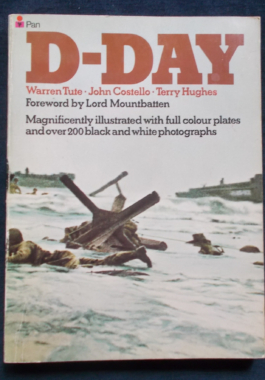 Warren Tute (1914-1989) a naval officer who took part in the Normandy landings, collaborated with historians John Costello & Terry Hughes to produce this volume book for the 30th anniversary of the D-Day landings. The book opens with a facsimile of a letter from Eisenhower to the troops and there is a foreword by Lord Mountbatten. There are the newspaper headlines of the day, cartoons, maps and fabulous colour and black and white photos - a comprehensive, pictorial study of the preparation for and the events of the epic force that was the D-Day landings of 1944.
Warren Tute (1914-1989) a naval officer who took part in the Normandy landings, collaborated with historians John Costello & Terry Hughes to produce this volume book for the 30th anniversary of the D-Day landings. The book opens with a facsimile of a letter from Eisenhower to the troops and there is a foreword by Lord Mountbatten. There are the newspaper headlines of the day, cartoons, maps and fabulous colour and black and white photos - a comprehensive, pictorial study of the preparation for and the events of the epic force that was the D-Day landings of 1944. -

Australia was almost defenceless against Japanese attack in 1942. Here it is suggested that vital lessons for today can be learnt from that period. Did the Australian leaders rely too heavily on Britain and were they let down? How much can Australia rely on any country for support in wartime? From the days of the First Fleet it was always accepted that the United Kingdom would send its fleet to defend Australia. For this reason Australia sent troops overseas as early as 1885 to help fight Imperial wars. The situation changed after 1918 for then Japan became a likely enemy. Could Britain defend Australia from attack and conduct a war in Europe? Dr. McCarthy examines both sides of the question and concludes that it was never possible.
-
 June, 1942. Johnnie Houlton has arrived in Britain from New Zealand under the Empire Training Scheme only a few months before. From then on and for the next few years, he was almost constantly in action or seeking action with 485 (NZ) Spitfire Squadron. He volunteered for service in Malta and sharply describes the drama of the convoy that took him there and the five months of siege conditions on the island. Houlton vividly recalls the atmosphere and the incidents of the air war from a pilot's-eye view, together with the development and technique of fighter operations - covering daylight bombing missions, low-level bombing and strafing and the formation of the Second Tactical Air Force in support of land forces. Illustrated with black and white photographs.
June, 1942. Johnnie Houlton has arrived in Britain from New Zealand under the Empire Training Scheme only a few months before. From then on and for the next few years, he was almost constantly in action or seeking action with 485 (NZ) Spitfire Squadron. He volunteered for service in Malta and sharply describes the drama of the convoy that took him there and the five months of siege conditions on the island. Houlton vividly recalls the atmosphere and the incidents of the air war from a pilot's-eye view, together with the development and technique of fighter operations - covering daylight bombing missions, low-level bombing and strafing and the formation of the Second Tactical Air Force in support of land forces. Illustrated with black and white photographs.








